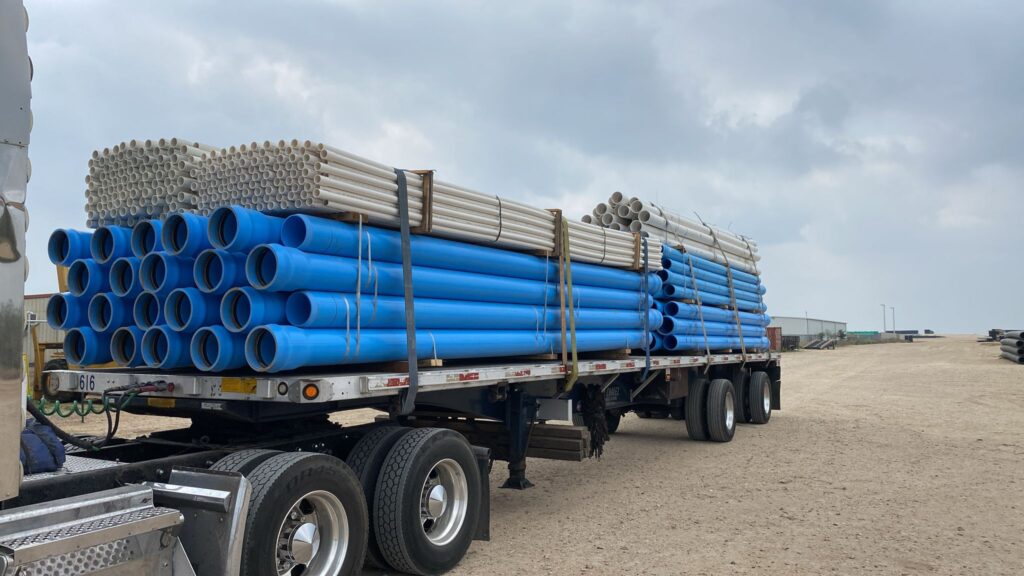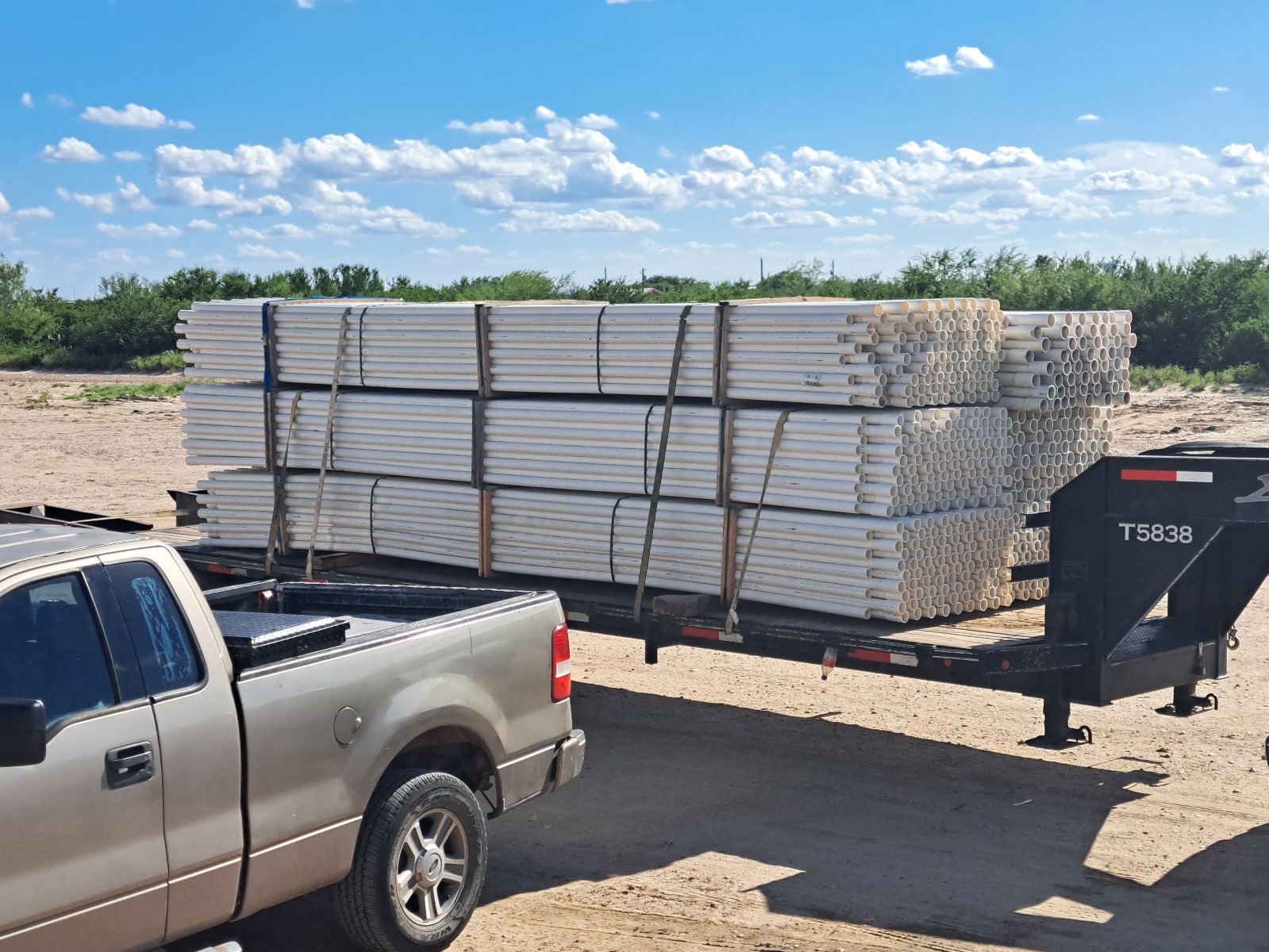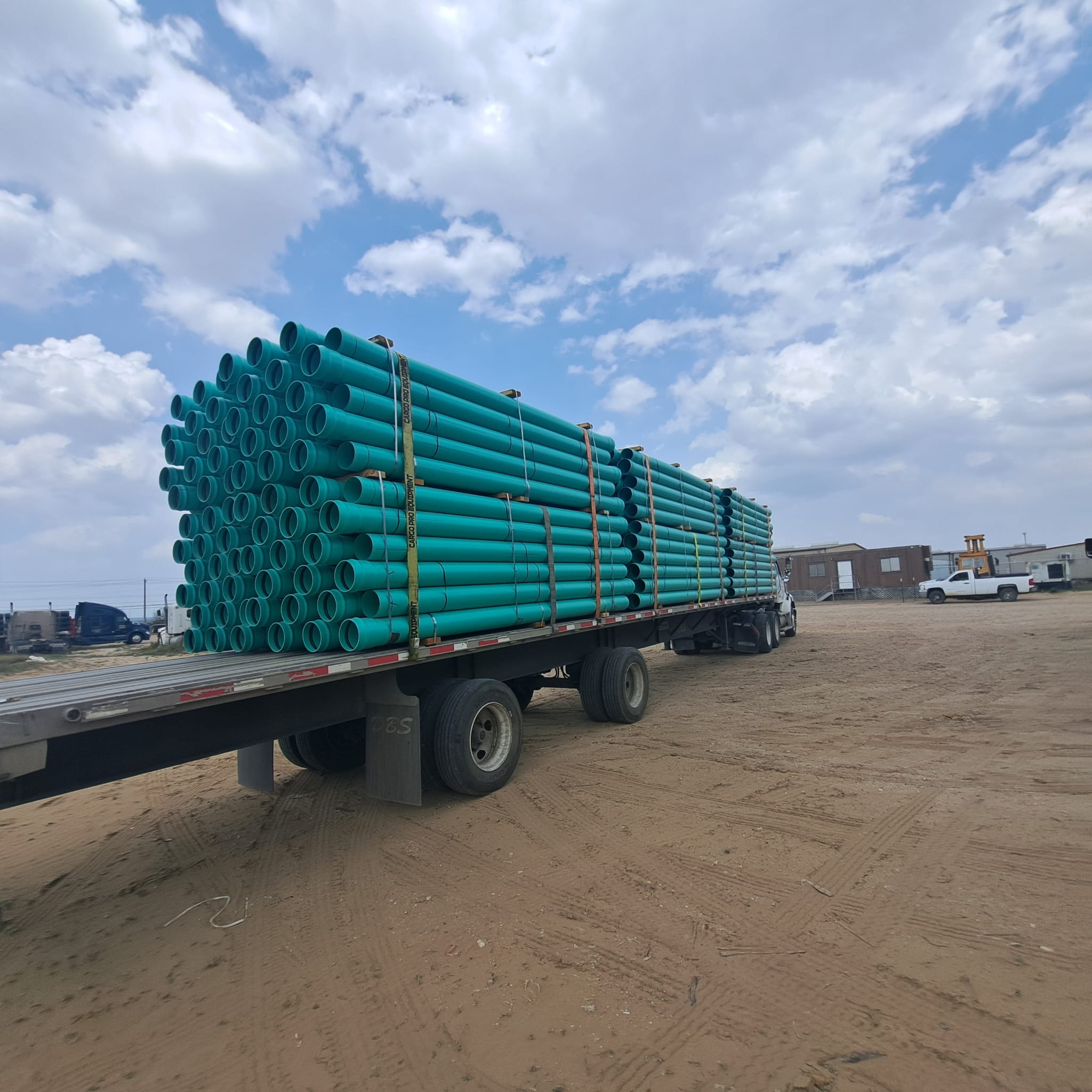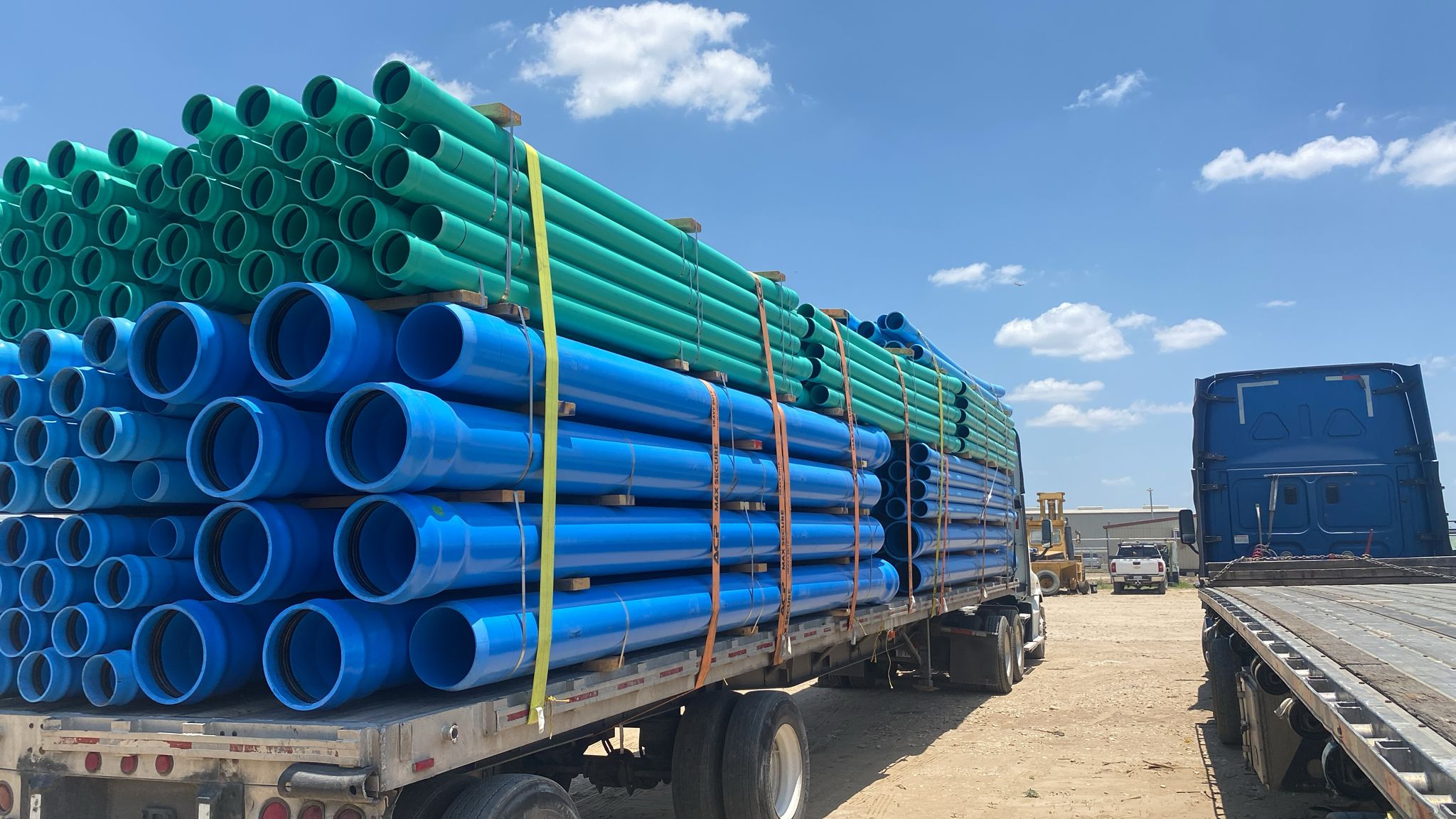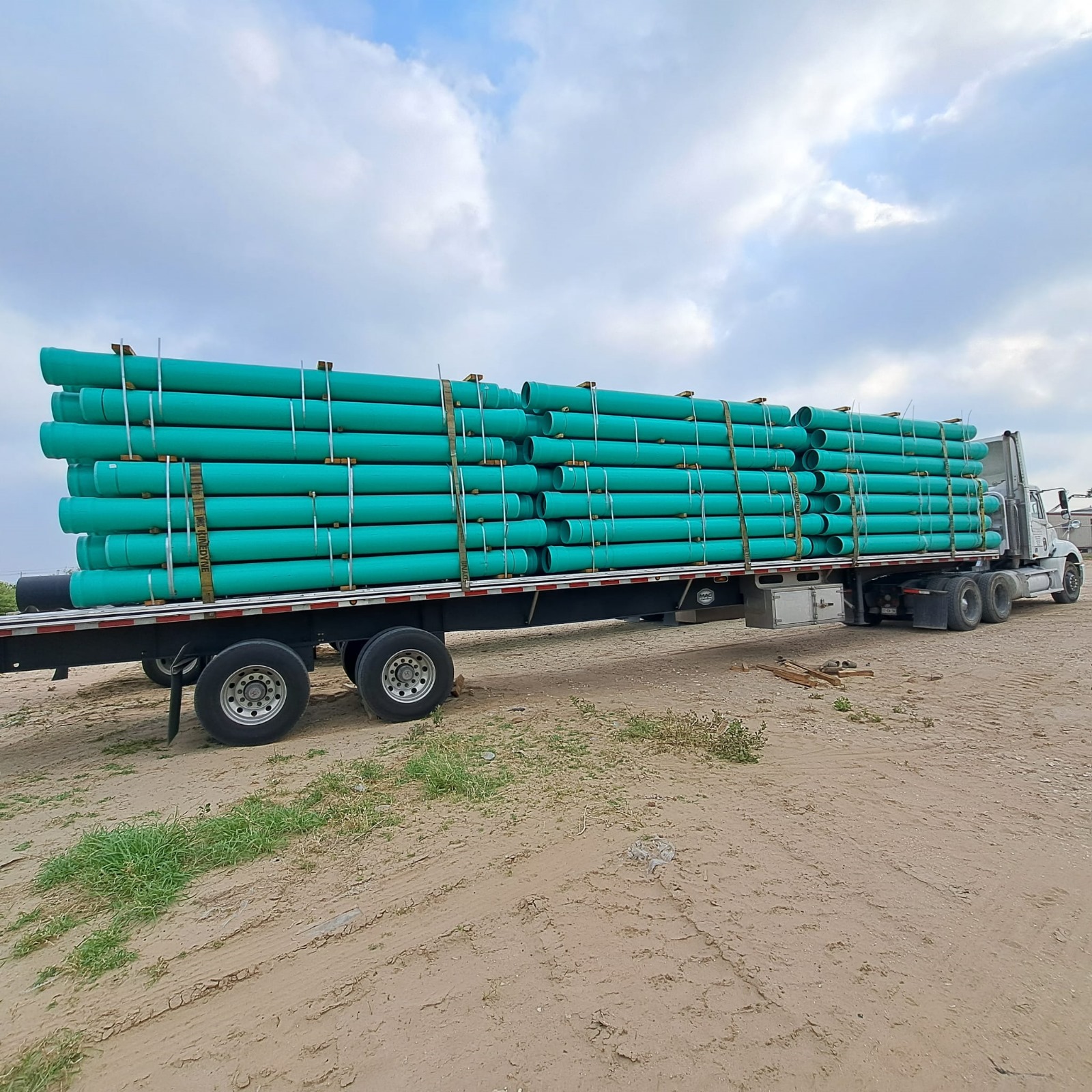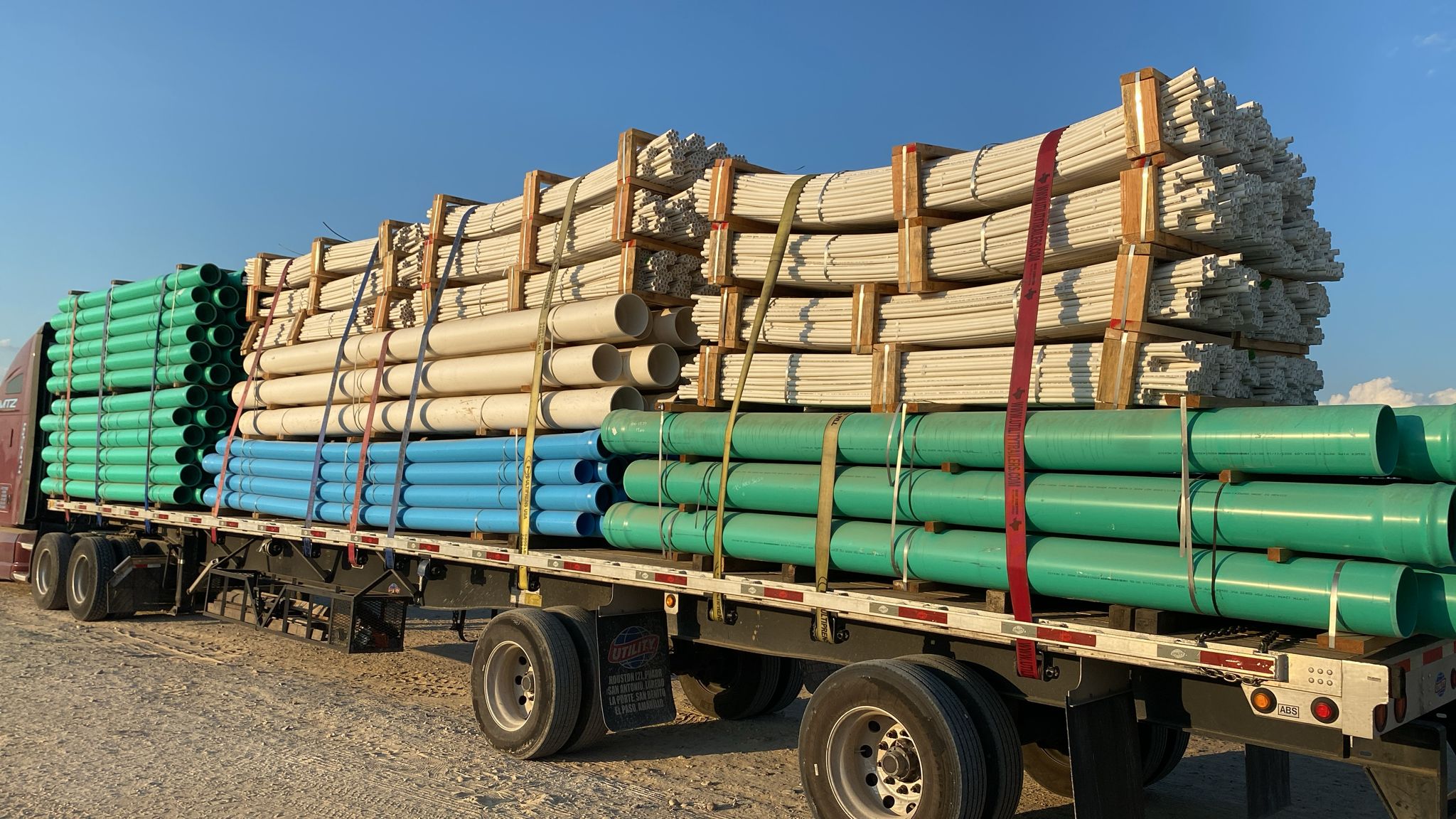Introduction: Why Pressure Ratings Matter in Every Pipe Project
Whether you’re building a municipal water line, agricultural system, or industrial plant, one number can make or break your project: pipe pressure rating.
Choosing the wrong pipe class can lead to burst lines, inspection failures, and costly replacements. Unfortunately, many contractors don’t fully understand how pressure ratings are defined—especially when comparing PVC vs. HDPE piping.
At GP Distributors USA, we supply top-quality pipe systems across Texas and surrounding states—and we’re committed to helping our clients avoid costly errors. In this blog, we’ll break down how pressure ratings are determined, what they mean, and how to choose the right one for your job.
Section 1: What Is a Pipe Pressure Rating?
A pipe’s pressure rating (also called its pressure class) defines the maximum internal pressure it can safely handle under normal conditions.
It’s typically expressed in:
-
PSI (pounds per square inch) in the U.S.
-
Bars or kPa in some international specs
This value considers:
-
Pipe diameter and wall thickness
-
Material strength
-
Temperature range
-
Safety factor (usually 2.0)
Important: A pipe’s pressure rating doesn’t mean that’s its bursting point—it’s the maximum safe operating pressure.
Section 2: Pressure Ratings in PVC Pipe
PVC pipe pressure ratings vary by:
-
Schedule (e.g., Schedule 40, 80)
-
Pressure Class (e.g., Class 125, Class 200)
-
Diameter
🔧 PVC Schedule vs. Pressure Class
Schedule (SCH) refers to wall thickness:
-
SCH 40: Common in residential/agriculture
-
SCH 80: Thicker walls, higher PSI
-
SCH 120+: Specialized, high-pressure systems
Pressure Classes are often used in municipal/agriculture systems:
-
Class 125 = rated for 125 PSI
-
Class 200 = rated for 200 PSI
-
Class 315 = rated for 315 PSI
As pipe diameter increases, pressure rating typically decreases due to reduced wall-to-diameter ratios.
Section 3: Pressure Ratings in HDPE Pipe
HDPE pipes use a DR (Dimension Ratio) system.
🔧 What is DR?
DR = Pipe Outer Diameter ÷ Wall Thickness
Lower DR = Thicker walls = Higher pressure rating.
| DR | Typical Pressure Rating (at 73°F) |
|---|---|
| DR 17 | 100 PSI |
| DR 13.5 | 160 PSI |
| DR 11 | 200 PSI |
| DR 9 | 250 PSI |
Unlike PVC, HDPE’s flexibility allows it to handle pressure surges better—even beyond its rated value, depending on application and design.
Section 4: Temperature’s Effect on Pressure Ratings
Both PVC and HDPE pressure ratings drop as temperature increases.
PVC De-Rating Example:
At 100°F, a Class 200 PVC pipe may only be rated for 160 PSI.
HDPE De-Rating Example:
At 120°F, a DR 11 HDPE pipe rated for 200 PSI at 73°F might drop to around 125–140 PSI, depending on resin type.
This is why choosing pipe based on expected operating temperature is critical, especially for:
-
Industrial hot water lines
-
Agricultural irrigation in hot climates
-
Chemical applications
Section 5: Comparing PVC vs. HDPE Pressure Ratings
| Feature | PVC | HDPE |
|---|---|---|
| Rating System | PSI, Schedule, or Class | DR (dimension ratio) |
| Flexibility | Rigid | Flexible |
| Surge Resistance | Moderate | High |
| De-Rating at High Temp | More severe | Less severe |
| Fitting Options | Wide variety (glued, gasketed) | Fused or mechanical |
| Common Max Rating | Up to 315 PSI (Class 315) | Up to 335 PSI (DR 7.3) |
If your project involves pressure surges (e.g., pump cycling), HDPE is often the better choice due to its ductility. But PVC can offer higher ratings in cooler, static conditions.
Section 6: Choosing the Right Pipe for Your Project
Contractors often ask: “Can I just use SCH 40 for everything?”
Short answer: No.
Here’s what to consider:
✅ Residential Plumbing
-
Use SCH 40 for standard cold water
-
SCH 80 or Class 200 for high-pressure irrigation or well systems
✅ Municipal Water Lines
-
Class 200 or Class 315 PVC with gaskets for large-diameter runs
-
HDPE DR 11 or DR 13.5 for flexible, trenchless installs
✅ Agriculture / Irrigation
-
HDPE DR 17 or PVC Class 160 for drip and sprinkler systems
-
Must withstand pressure from booster pumps and valves
✅ Industrial / Chemical
-
SCH 80 PVC for chemical resistance and higher temp
-
HDPE for chemical flexibility, especially in corrosive or high-surge environments
At GP Distributors, we help spec the best product for your specific system—not just what’s cheapest off the shelf.
Section 7: How Pipe Pressure Ratings Affect Installation
Choosing the wrong rating can create serious issues:
-
Failing inspections
-
Blowouts under surge conditions
-
Leaks from incompatible fittings
-
Premature pipe failure under long-term strain
Avoid common mistakes like:
-
Gluing SCH 40 in high-pressure systems
-
Using gasketed PVC without proper torque
-
Overbending HDPE without observing minimum bend radius
Our team provides product guidance and installation best practices to protect your job site and your reputation.
Section 8: Common Mistakes Contractors Make with Pressure Ratings
❌ Using Pressure Ratings as Burst Ratings
Rated PSI ≠ burst pressure. Always allow a safety margin, especially in dynamic systems.
❌ Not Accounting for Elevation Head
Pumps add pressure—so does gravity. In a 100 ft elevation change, you add ~43 PSI.
❌ Mixing Pipe Schedules in the Same Line
SCH 40 and SCH 80 may look similar—but have different pressure and flow characteristics.
❌ Ignoring Manufacturer Labels
Always double-check that the pressure class matches spec. Pipe color or label alone isn’t enough.
Section 9: Pressure Rating FAQs
🔸 What’s the difference between static and working pressure?
-
Static pressure is what the pipe holds while at rest.
-
Working pressure includes flow surges, valve slams, and pressure cycling.
🔸 How do I calculate pressure loss over distance?
Use flow rate, diameter, and material friction to estimate loss. GP Distributors can help you run calcs based on job specs.
🔸 Can HDPE be used in buried high-pressure applications?
Yes—with the correct DR rating and backfill. HDPE is ideal for trenchless installs and directional boring.
Section 10: Why Work with GP Distributors USA?
We’re not just selling pipe—we’re helping you complete the job right.
Here’s how we support you:
-
Product guidance based on your specific PSI needs
-
Delivery to job sites across TX, OK, LA, NM, and AR
-
High-quality PVC, HDPE, and fittings from trusted brands
-
Quick turnaround times to keep your job on schedule
-
Friendly, knowledgeable reps who answer your call, every time
If you’re not sure what class, schedule, or DR to use, don’t guess—call GP Distributors.
Conclusion: Take the Guesswork Out of Pressure Ratings
Understanding pipe pressure ratings is essential to building a safe, code-compliant, and long-lasting system. Whether you’re working on irrigation, infrastructure, or industrial systems, your pipe choices matter.
Let GP Distributors USA be your partner in precision. Our team is ready to help you choose the right pressure rating, the right pipe, and the right path to a successful install.
📞 Call to Action:
Have a job coming up and not sure what pipe pressure class you need?
Call GP Distributors USA today. We’ll help you spec the perfect PVC or HDPE solution—so you can build with confidence.




